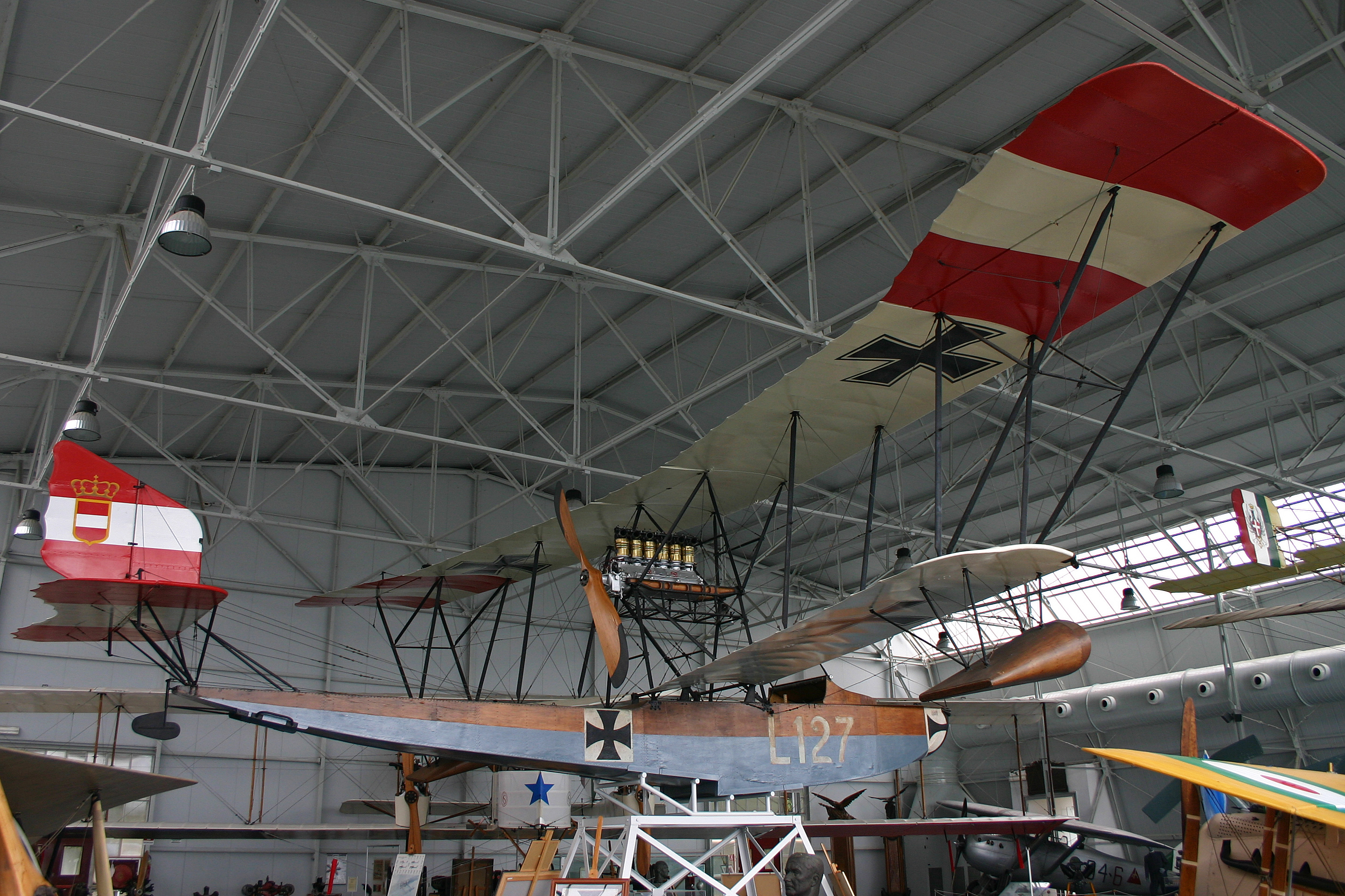Lohner Type L on:
[Wikipedia]
[Google]
[Amazon]
The Lohner L was a reconnaissance
 The captured aircraft (serial L.40) was taken intact near the naval air station of
The captured aircraft (serial L.40) was taken intact near the naval air station of

flying boat
A flying boat is a type of fixed-winged seaplane with a hull, allowing it to land on water. It differs from a floatplane in that a flying boat's fuselage is purpose-designed for floatation and contains a hull, while floatplanes rely on fusela ...
produced in Austria-Hungary during World War I. It was a two-bay biplane
A biplane is a fixed-wing aircraft with two main wings stacked one above the other. The first powered, controlled aeroplane to fly, the Wright Flyer, used a biplane wing arrangement, as did many aircraft in the early years of aviation. While ...
of typical configuration for the flying boats of the day, with its pusher engine mounted on struts in the interplane gap. The pilot and observer sat side by side in an open cockpit
A cockpit or flight deck is the area, usually near the front of an aircraft or spacecraft, from which a Pilot in command, pilot controls the aircraft.
The cockpit of an aircraft contains flight instruments on an instrument panel, and the ...
, and both the upper and lower sets of wings featured sweepback
A swept wing is a wing that angles either backward or occasionally forward from its root rather than in a straight sideways direction.
Swept wings have been flown since the pioneer days of aviation. Wing sweep at high speeds was first investigate ...
.
Development
The design was essentially a more powerful version of theLohner E
The Lohner E was a reconnaissance flying boat built in Austria-Hungary during World War I.Taylor 1989, p. 611.''World Aircraft Information Files''. London: Bright Star Publishing, pp. File 900 Sheet 20. The "E" stood for Igo Etrich, one of the L ...
, and became highly influential. Apart from licensed production by UFAG, the L provided the basis for designs by other major manufacturers. In Germany, Hansa-Brandenburg manufactured a modified version of it as their first flying boat, the , and in Italy, a captured example was used as a pattern aircraft by Macchi
Aermacchi was an Italian aircraft manufacturer. Formerly known as Aeronautica Macchi, the company was founded in 1912 by Giulio Macchi at Varese in north-western Lombardy as Nieuport-Macchi, to build Nieuport monoplanes under licence for the Ita ...
, who produced it as the L.1. In turn, the L.1 would provide the foundation for a large number of Macchi designs over the coming years.
 The captured aircraft (serial L.40) was taken intact near the naval air station of
The captured aircraft (serial L.40) was taken intact near the naval air station of Porto Corsini
Porto or Oporto () is the second-largest city in Portugal, the capital of the Porto District, and one of the Iberian Peninsula's major urban areas. Porto city proper, which is the entire municipality of Porto, is small compared to its metropol ...
. The captured flying boat was copied by Macchi-Nieuport and the L.1 was built within a month. The L.1s were delivered to Italian maritime reconnaissance and bombing units based on the Adriatic. An improved version was developed as the Macchi L.2
The Macchi L.2 was an Italian biplane flying boat developed from the earlier Macchi L.1, itself a copy of a captured Austrian Lohner flying boat.
Development
In an attempt to improve the performance of the L.1 flying-boat Macchi, the design was ...
A restored example of an Austro-Hungarian Lohner L (serial L.127) is preserved at the Italian Air Force Museum at Vigna di Valle
''Vigna'' is a genus of plants in the legume family, Fabaceae, with a pantropical distribution.Aitawade, M. M., et al. (2012)Section ''Ceratotropis'' of subgenus ''Ceratotropis'' of ''Vigna'' (Leguminosae–Papilionoideae) in India with a new ...
.
Operational history
Lohner seaplanes saw extensive use before and during World War I, and those aircraft that survived the war served for several years. Some important and interesting events are related, such as: *Immediately after the declaration of war by Austria-Hungary on Serbia and Montenegro, from 28 July 1914 to 2 August 1914, Lohner L seaplanes fromKumbor
Kumbor ( sr-cyr, Кумбор) is a small town in the municipality of Herceg Novi, Montenegro
)
, image_map = Europe-Montenegro.svg
, map_caption =
, image_map2 =
, capital = Podgorica ...
patrolled and photographed the Montenegrin artillery positions, representing the first use of aircraft in World War I.
*On 16 September 1915 Lohner L 132 piloted by a Lieutenant Commander Dimitrije Konjović and Lohner L 135 piloted by Walter Železni, on regular reconnaissance missions off Cattaro found the French Brumaire-class submarine ''Foucault Foucault may refer to:
*Foucault (surname)
*Léon Foucault (1819–1868), French physicist. Three notable objects were named after him:
**Foucault (crater), a small lunar impact crater
** 5668 Foucault, an asteroid
**Foucault pendulum
*Michel Fouca ...
'' and attacked it with bombs. The submarine was damaged in the attack and was abandoned by her crew. One Lohner flying boat landed at sea, captured two French officers and transported them to Kumbor. The other members of the crew were rescued by an Austro-Hungarian torpedo boat. This was the first sinking of a submarine from the air in the history of aviation.
Variants
* Lohner L * Lohner R - Photo-reconnaissance version * Lohner S - Trainer version * Macchi L.1 - with Fiat machine gun and Isotta-Fraschini V.4a engine (14 built)Operators
; *Austro-Hungarian Navy
The Austro-Hungarian Navy or Imperial and Royal War Navy (german: kaiserliche und königliche Kriegsmarine, in short ''k.u.k. Kriegsmarine'', hu, Császári és Királyi Haditengerészet) was the naval force of Austria-Hungary. Ships of the A ...
;
* Kaiserliche Marine
;
* Regia Marina (Macchi L.1)
;
* Yugoslav Royal Navy - 4 aircraft Lohner TL
Specifications (Lohner L)

See also
Notes
References
* * * *Further reading
*